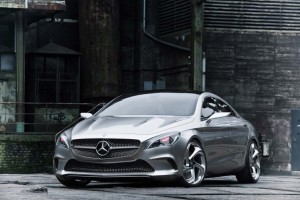Locked in a global battle for the growing luxury market, both BMW and Mercedes-Benz plan to launch a new product blitz never before seen in the high-line realm – even as they both fight it out for dominance in what remains the world’s largest luxury market.
The product assault is expected to cover a wide range of the luxury market, including the premium luxury segment, but a significant focus will be placed on lower-end offerings such as the BMW X1 crossover and a comparable offering from Mercedes.
Both makers will also turn to their allies for assistance in turning out their new products, rather than going it alone as they traditionally might have.
Mercedes officials have confirmed that they will roll out at least 10 new products in just the coming year. Now, BMW appears to be preparing to boost its current model line-up from six to 10, according to a report in Automotive News.
That’s on top of new models that will expand or update existing model-lines, such as the new 6-Series Grand Coupe, a 4-door coupe-like sedan based on the most recent version of BMW’s 6-Series coupe. And an all-new version of the flagship 7-Series sedan is due to market for 2013.
BMW officials have decided to target a range of “white space” vehicles, according to industry sources, hoping to leave no room open for a competitor like Mercedes to make an end run around the Bavarian maker.
But Mercedes has similar goals in mind. The maker has been expanding its own line-up and updating key products of its own – notably including its G-Wagen, GL and GLK sport-utility vehicles for 2013.
At the Beijing Motor Show, earlier this year, the Stuttgart-based manufacturer introduced a new version of its smallest model, the A-Class, a senior executive confirming to TheDetroitBureau.com that there will be at least four new A-Class offerings.
One of those will be the CLA, a downsized version of Mercedes’ popular CLS coupe-like-sedan. Notably, it will be the first A-Class-based product to come to the U.S. market.
Luxury makers, in general, have begun to expand into downsized segments traditionally left for more mainstream marques. That reflects the reality that the brands must meet stiff new CO2 and mileage requirements being put in place in key markets including the U.S., Europe, Japan and China.
“That will require smaller cars,” Steve Cannon, chief executive of Mercedes-Benz US told TheDetroitBureau.com during an exclusive interview.
As with BMW, Mercedes plans to update existing models, including a “major” facelift of the mid-range E-Class and a full update of the flagship S-Class, both due to market next year.
“The breadth and depth of our line-up is one of our strategic advantages,” explained Cannon.
But as with its rival, Mercedes is changing the way it develops at least some new products. The CLA and other A-Class models share a new compact “architecture” dubbed MFA. That, in turn, is being shared with the Renault/Nissan Alliance, with which Mercedes’ parent Daimler has formed a partnership of its own. The same platform used for the CLA will appear under the skin of the Infiniti Etherea.
Meanwhile, a number of upcoming Mercedes products will soon rely on engines produced at the Nissan plant in Decherd, Tennessee.
Such an approach is essential, stressed Cannon, in today’s industry because of the “enormous” costs of developing not only new vehicles but the wide range of advanced powertrains stricter emissions and mileage standards will require. Among the many new models Mercedes plans to offer will be a variety of hybrids and pure battery-electric vehicles.
That goes for BMW, as well. The Bavarian maker recently announced plans to expand a new alliance with erstwhile rival Toyota. That will include not only work on new electric powertrains but also the development of a new sports car that both makers plan to market – albeit with different bodies.
Many, but not all, the new products coming from the two German marques will be targeted at the U.S. market where they are locked in a bitter rivalry for luxury sales leadership. BMW took the crown last year but Mercedes holds a narrow lead for the first half of 2012 and is aiming to shore up that position in the months ahead.

